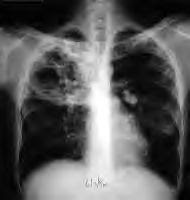A Sana’a University study has shown that there is a high rate of extra pulmonary tuberculosis cases among Yemeni tuberculosis patients, when compared to other Arab states. The study titled, Patterns of TB among patients attending the National TB Institute, was conducted by researchers at the university’s Faculty of Medicine and Health Sciences and supervised by Dr. Abdullah Moharram. Researchers studied 479 TB patients from different Yemeni governorates who received treatment at the National Tuberculosis Institute between September 2005 and January 2006. The study found that about 54 percent of patients attending the institute had pulmonary TB while the remaining 47 percent had extra-pulmonary TB. The rate of extra-pulmonary TB cases is higher than that of other Arab countries such as Egypt (28 percent), Saudi Arabia (27 percent) and Somalia (16 percent). TB produces lesions on bodily organs, especially the lungs. It can involve the central nervous system, lymphatic system, circulatory system, genitourinary system, bones and joints. About 40,000 infectious particles can be produced by a single sneeze. One cough from a pulmonary TB patient produces up to 3,000 infectious particles. People with prolonged, frequent, or intense contact with the disease face the highest risk of becoming infected, with an estimated 22 percent infection rate. A person with untreated, active TB can infect 10 to 15 people each year. If untreated, the death rate for these active TB cases is more than 50 percent. The risk of contracting TB increases with the frequency of contact with people who have the disease, with crowded or unsanitary living conditions and with poor nutrition. “This disease is an economic one. It is influenced by the economic state of the patient,” said Hamood Mahyub, a doctor and manager at the NTBI. TB is considered to be one of the major public health problems in Yemen, according to the 2004 World Health Organization report. Yemen registered 9,063 cases of TB at the NTBI in 2005, according to Abdul-Bari al-Hammadi, statistics officer at the NTBI. “351 have had a relapse after being treated because of their ignorance and misuse of the medication,” he said. “The Hodeidah Governorate has 603 cases, the highest number of cases in the country and Sayoun has the fewest number of recorded cases, with only ten. This means that for every 100,000 people in Yemen, there are 40 TB cases,” he said. According to the report, the number of pulmonary cases at the NTBI was 7, 691, compared with 9,466 extra pulmonary cases. Moreover, the report recorded 2,500 cases resulted in the patients death.The most common types of extra pulmonary TB were found in the lymph node, (33 percent), in the pleura (21 percent), and in the abdomen & bones (16 percent). The study found that 55 percent of adults who participated in the study were pulmonary TB cases while about 58 percent of children and 52 percent of elderly people had extra pulmonary TB. The study also found that almost half the patients (48 percent) were illiterate and 75 percent were living in low economic conditions. Doctors in the NTBI complain about the neglect shown by many patients’ towards their state of health. “They do not continue their Directly Observed Treatment Short-course program treatment once they start feeling better. They are often illiterate, which makes our work more difficult,” said Dr. Mahyub. “The media does not help to illuminate people about the dangers of this disease, its causes and means of avoiding infection.” The overall objective of global TB control is to reduce deaths due to the disease, to lower the occurrence of the disease itself, and finally to drastically reduce the transmission of infection. The Bacillus Calmette-Guerin vaccination is the most widely used vaccine in the world, but it has virtually no impact on the transmission of TB because its preventive effect on the infectious forms of TB is very limited. Nevertheless, because it is effective in preventing serious and life-threatening forms of TB in infants and young children, BCG vaccination continues to be recommended in countries where TB is common. In the 172 countries where BCG is used, around 85 percent of newborn babies are vaccinated with protective efficacy up to 80 percent for 10 to 15 years. 89 percent of the patients who attended the NTBI were found to be unvaccinated compared to just 11 percent who were vaccinated. It was also found that 50 percent of vaccinated patients and 46 percent of unvaccinated patients were infected with extra-pulmonary TB. Most TB patients suffered from fever, loss of weight, night sweats, chronic coughing, sputum and hemoptysis, the study found. TB patient may also suffer from other diseases affecting the immune system. The study found that 11 percent of patients had diabetes and there were two cases of chronic renal failure. The study found that about 16 percent of patients treated in the institute were completely cured, while 25 percent were undergoing treatment. Alarmingly, 58 percent of patients had failed to continue treatment and one percent had died. According to the World Health Organization, 8 million people become ill with TB and 2 million people die from the disease worldwide every year. In 2004, around 14.6 million people had active TB with 9 million new cases reported. The WHO estimated that 1.7 million deaths resulted from TB in 2004. TB is the world’s greatest infectious killer of women of reproductive age and the leading cause of death among people with HIV/ AIDS. The study recommended increasing the coverage of DOTS program to include all TB patients; providing TB treatment centers with the necessary equipment; providing patients with good knowledge of TB; and encouraging the Ministry of Public Health and Population to increase the coverage of BCG to include all children in their first months as can as possible.
http://www.yobserver.com/sports-health-and-lifestyle/10013081.html
WHAT'S NEW IN TUBERCULOSIS
Thursday, 18 October 2007
Subscribe to:
Post Comments (Atom)





No comments:
Post a Comment